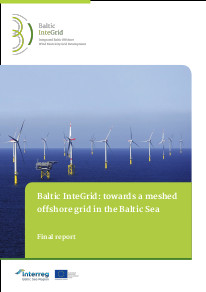
Governments across the globe are finally recognising the urgent need to jointly address climate change. This has led to the commitments under the Paris Agreement to curb greenhouse gas emissions and keep global warming well below 2 °C. While the global energy transition is gaining momentum, there is far too little progress to stay within the 2 °C target. To accelerate the shift to a sustainable energy system, we need innovative ideas that go beyond business as usual.
Europe has been a leader in climate policy in general, and in the development of renewable energy in particular – although other countries are quickly catching up. The European Union has set out to foster renewable energy development and further market interconnection, reducing emissions by 80% to 95% by 2050 in the process.
Offshore wind energy is crucial to this renewable energy future. Boasting a higher generation capacity and more full load hours than onshore wind, the sector has achieved remarkable cost reductions in recent years. The Baltic Sea has great potential in this regard, thanks to a range of favourable conditions like shallow waters, strong winds and short distances to shore.
With 2.2 GW of installed capacity and rising, the offshore wind market in the Baltic Sea is on the cusp of accelerated development. Now is the time to explore state-of-the-art solutions for the connection and distribution of offshore wind energy. A meshed grid is one such solution: an innovative, efficient way to link offshore wind farms while connecting electricity markets. Combining interconnector infrastructure with export cables, a meshed offshore grid in the Baltic Sea would boost system stability and the integration of electricity markets, reduce issues linked to curtailment and ensure a high utilisation rate for cable infrastructure. Moreover, the installation, maintenance and service sector that would be developed around a meshed offshore grid could help the Baltic Sea Region excel in green technologies and innovation while creating jobs for local populations.
While a meshed offshore grid has many benefits, it is also characterised by a multilateral and capital-intensive nature, the complexity of which needs to be alleviated through a guiding hand from policy-makers. Keeping in mind the long lead times of offshore wind and grid projects, it is imperative that interest in meshed offshore grids translate into bold policy-making and reinforced transnational cooperation soon, before the region is further locked into a suboptimal energy system.
The Baltic Sea Region has the potential to be a major player in innovative offshore wind technologies and grid solutions. It is high time to start planning for that future, together.
damir.belltheus-avdic@ikem.de
+49 (0)30 408 1870-14